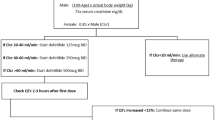Summary
Conventional antiarrhythmia therapy by oral or intravenous routes of administration is often ineffective and results in drug-associated complications and toxicity. In addition, poor bioavailability and a high first-pass effect limit therapeutic applications of several investigational antiarrhythmic compounds, which are otherwise more potent and less toxic than available agents. The regional nature of the several cardiac diseases, such as ischaemia, restenosis or heart valve calcification, may require a high concentration of drug at the location of the disease, which by conventional routes may not be attainable due to systemic toxicity of the drug.
Localised cardiac delivery of antiarrhythmic agents, based on drug-polymer implants, may have several advantages, including enhanced drug effects and reduced systemic drug toxicity. Computer-assisted automated feedback systems may further enhance the usefulness of this therapy in the clinical setting.
Before clinical application of this method of drug delivery further study will be required, but it is hypothesised that pharmacokinetic variability for drugs delivered in this manner will be reduced and therefore efficacy and toxicity will be more predictable.
Similar content being viewed by others
References
Brugada G. ‘Torsade de Pointes’. PACE 1988; 11: 2246–8
Lee KS, Lee EW. Membrane activities of Class III antiarrhythmic compounds: a comparison between ibutilide, d-sotalol, E-4031, sematilide and dofetilide. Eur J Pharmacol 1993; 234: 43–53
Lee KS. Ibutilide, a new compound with potent Class III antiarrhythmic activity, activates a slow inward Na+ current in guinea pig ventricular cells. J Pharmacol Exp Ther 1992; 262: 99–108
Labhasetwar V, Levy RJ. Polymer systems for cardiovascular drug delivery. Polymer News 1992; 17: 336–42
Labhasetwar V, Kadish A, Underwood T, et al. The efficacy of controlled release d-sotalol-polyurethane epicardial implants for ventricular arrhythmias due to acute ischemia in dogs. J Control Release 1993; 23: 75–86
Labhasetwar V, Underwood T, Gallagher M, et al. Sotalol controlled-release systems for arrhythmias: in vitro characterization, in vivo drug disposition, and electrophysiologic effects. J Pharm Sci 1994; 83: 157–64
Labhasetwar V, Underwood T, Gallagher M, et al. Epicardial controlled release ibutilide: effects on defibrillation threshold and electrophysiologic parameters. J Cardiovasc Pharmacol 1994; 24: 826–40
Siden R, Kadish A, Flowers W, et al. Epicardial controlled-release verapamil prevents ventricular tachycardia episodes induced by acute ischemia in a canine model. J Cardiovasc Pharmacol 1992; 19: 798–809
Sintov A, Scott W, Dick M, et al. Cardiac controlled release for arrhythmia therapy: lidocaine-polyurethane matrix studies. J Control Release 1988; 8: 157–65
Sintov A, Scott WA, Gallagher KP, et al. Conversion of ouabain-induced ventricular tachycardia in dogs with epicardial lidocaine: pharmacodynamics and functional effects. Pharm Res 1990; 7: 28–33
Sintov A, Scott WA, Siden R, et al. Efficacy of epicardial controlled-release lidocaine for ventricular tachycardia induced by rapid ventricular pacing in dogs. J Cardiovasc Pharmacol 1990; 16: 812–7
Siden R, Flowers W, Levy R. Epicardial propranolol administration for ventricular arrhythmias in dogs: matrix formulation and characterization. Biomaterials 1992; 13: 763–70
Schwendeman SP, Amidon GL, Labhasetwar V, et al. Modulated drug release using iontophoresis through heterogeneous cation-exchange membranes, II: influence of cation-exchanger content on membrane resistance and characteristic times. J Pharm Sci 1994; 83: 1482–93
Schwendeman SP, Amidon GL, Meyerhoff ME, et al. Modulated drug release using iontophoresis through heterogeneous cation-exchange membranes: membrane preparation and influence of resin cross-linkage. Macromolecules 1992; 25: 2531–40
Schwendeman SP, Amidon GL, Levy RJ. Determinants of the modulated release of antiarrhythmic drugs by iontophoresis through polymer membranes. Macromolecules 1993; 26: 2264–72
Labhasetwar V, Underwood T, Schwendeman S, et al. Iontophoresis for modulation of cardiac drug delivery. Proc Natl Acad Sci USA 1995; 92: 2612–6
Avitall B, Hare J, Zander G, et al. Iontophoretic transmyocardial drug delivery: a novel approach to antiarrhythmic drug therapy. Circulation 1992; 85: 1582–93
Fernandez-Ortiz A, Meyer BJ, Mailhac A, et al. A new approach for local intravascular drug delivery: iontophoretic balloon. Circulation 1994; 89: 1518–22
Schwendeman S, Labhasetwar V, Levy R. Model features of a cardiac iontophoretic drug delivery implant. Pharm Res 1995; 12: 790–5
Winkle R, Mead R, Ruder M, et al. Long-term outcome with the automatic implantable cardioverter defibrillator. J Am Coll Cardiol 1989; 13: 1353–61
Gene therapy for cardiovascular disease [editorial]. Br Heart J 1994; 72: 309–12
Takeshita S, Zheng L, Asahara T, et al. In vivo evidence of enhanced angiogenesis following direct arterial gene transfer of the plasmid encoding vascular endothelial growth factor [abstract]. Circulation 1993; 88: 1–476
Simons M, Edelman E, DeKeyser J-L, et al. Antisense c-myb oligonucleotides inhibit intimai arterial smooth muscle cell accumulation in vivo. Nature 1992; 359: 67–70
Villa A, Guzman L, Poptic E, et al. The effects of antisense c-myb oligonucleotides on vascular smooth muscle cell proliferation and response to vessel wall injury. Circ Res 1995; 76(4): 505–13
Author information
Authors and Affiliations
Rights and permissions
About this article
Cite this article
Labhasetwar, V., Levy, R.J. Novel Delivery of Antiarrhythmic Agents. Clin-Pharmacokinet 29, 1–5 (1995). https://doi.org/10.2165/00003088-199529010-00001
Published:
Issue Date:
DOI: https://doi.org/10.2165/00003088-199529010-00001




